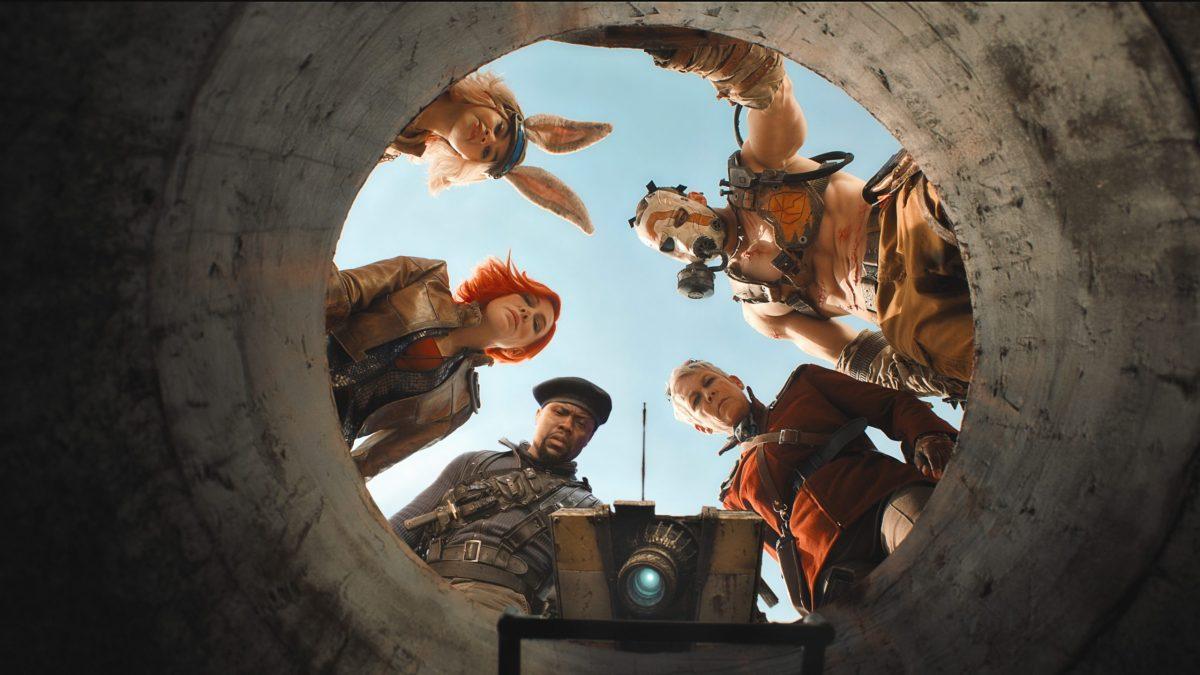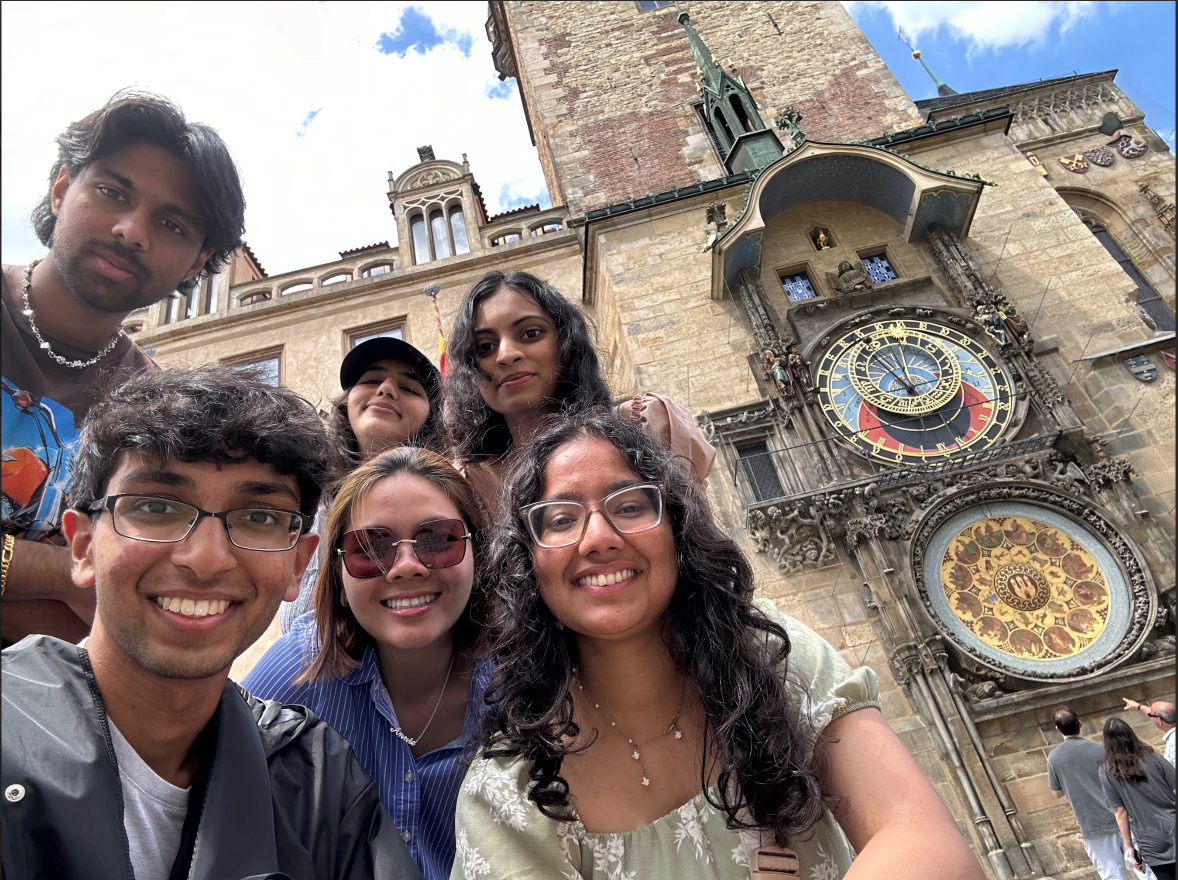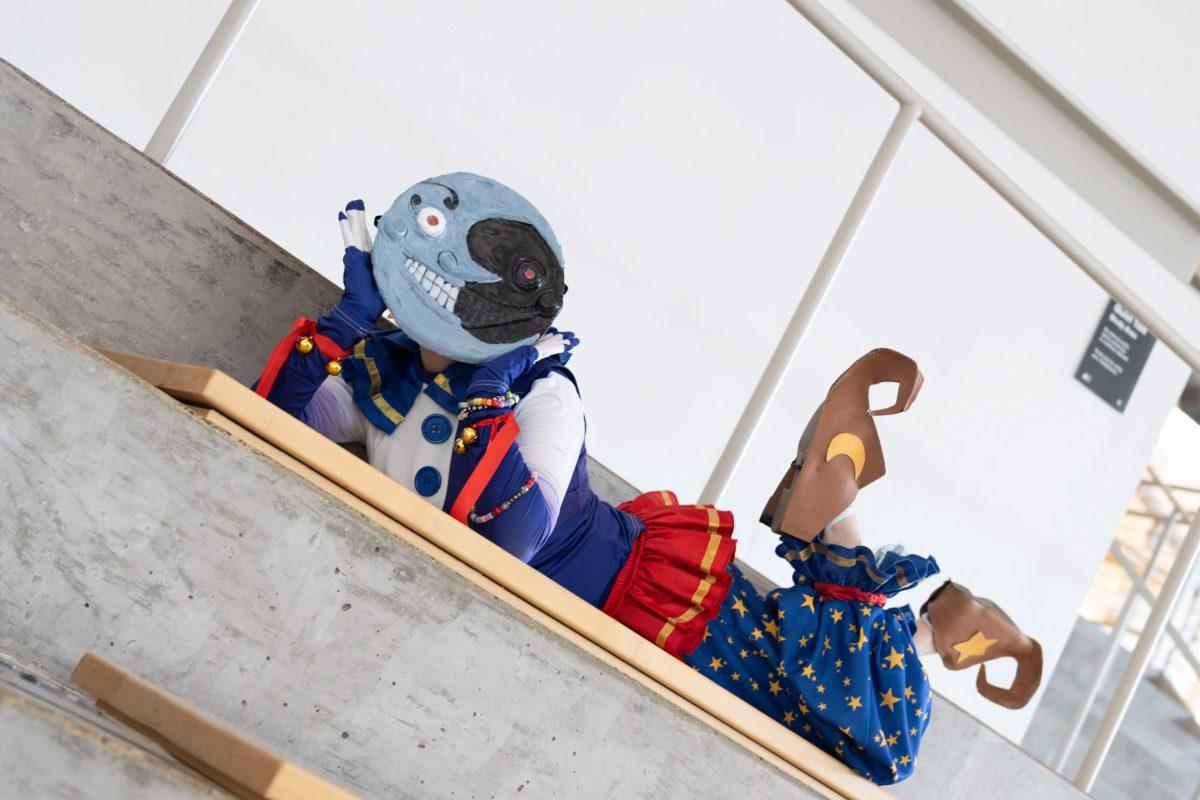Three massive spotlights sliced through the Dallas night, casting a crimson glow over the Texas Theatre as cosplayers and cinephiles alike gathered beneath the twinkling marquee for a cinematic trip to Pandora. As the lights dimmed and the film began, the crowd settled in for the promised chaotic, colorful ride through the wastelands of Pandora — a promise somewhat fulfilled with a few bumps along the way.
The Texas Theatre transformed into a playground for “Borderlands” enthusiasts, with the red carpet graced by Randy Pitchford, CEO of Gearbox Software and executive producer of “Borderlands,” and executive producer Ari Arad. The premiere wasn’t just a celebration of the new film, but of the deeply-rooted love fans and creators have for the franchise — a series of first-person shooter games known for its cel-shaded art style, dark humor and wild, loot-driven gameplay set in the lawless dystopian world of Pandora. Since its debut in 2009, “Borderlands” has captivated gamers with its rich lore, offbeat characters and relentless action, and the film adaptation aims to captivate a generation of cinephiles just as much.
The narrative draws heavily from the first two games, blending familiar elements into a condensed story. However, compared to other successful video game adaptations like Pokémon or Sonic the Hedgehog where the world-building and introduction of new elements were exceptionally well-executed, Borderlands doesn’t quite reach those immersive heights. Despite being rated PG-13, the film often felt more restrained — almost as if it were aiming for a younger audience. The action sequences and humor felt amateurish and bland. This dilution of the vibrant, hectic energy that defines the games left the adaptation feeling underwhelming. The film missed the opportunity to fully embrace the source material’s zaniness.
Additionally, the frenetic action on screen often overshadowed the film’s soundtrack. When listened to independently, pieces like “No Salvation Without Sacrifice” felt more epic and emotionally charged. However, Steve Jablonsky’s soundtrack did have moments of brilliance in tandem with the visuals, particularly in tracks like “What Peace Sounds Like,” which provided a much-needed emotional anchor in a film that otherwise lacked depth.
The action sequences, though plentiful, often felt like an arcade game. The transitions between scenes were abrupt, lending a disjointed feel reminiscent of the quick-cut style of video games. There’s an undeniable thrill in the chaos — a kinetic energy that mirrors the wild pace of the “Borderlands” games. However, the pacing felt too fast, with character interactions and world-building moments either forced or glossed over. For example, the relationship between Lilith and Dr. Patricia Tannis hinted at a complicated history, with Lilith’s initial hostility suggesting past conflicts or betrayal. But the film quickly moved on, leaving the relationship unexplored. Although the backstory between the two is eventually revealed, the characters don’t seem to have lasting, appropriate emotional responses, leaving little time for the audience to connect with the characters or the world they inhabit.
Another shortfall lies in the underutilization of the rich lore that makes Borderlands a beloved franchise. The film only skims the surface of Pandora’s vast mythology, leaving out characters and plotlines that could have added depth to the narrative. This absence is most felt in the conclusion where the intended emotional payoff feels unearned because of a lack of character development.
Despite the film’s shortcomings, some performances stood out. Cate Blanchett’s portrayal of Lilith was memorable, largely because of her striking orange hair and commanding presence making her a focal point in every scene. The chemistry between her and Ariana Greenblatt’s Tiny Tina was particularly engaging, especially during a beautifully choreographed scene toward the end where the two converse amid a backdrop of fireworks. Kevin Hart’s performance as Roland offered a fresh perspective; his character’s big, serious persona clashed with Hart’s naturally comedic and fast-talking style, creating an interesting dynamic that worked surprisingly well.
Visually, the film is a feast. The set designs are intricate and immersive, with the vibrant color palette echoing the cel-shaded aesthetic that fans know and love. The illuminated masks, the sprawling deserts of Pandora, and the detailed costumes — especially Lilith’s ethereal wings — are standout elements that elevated the film’s visual appeal.
Cheers and applause erupted when the Gearbox logo and the names of the two executive producers appeared in the credits as the movie reached its end. Sparse chuckles were heard throughout the rolling of credits, particularly during Claptrap’s quips.
The film walked a tightrope between being faithful to the games and trying to establish its own identity. While it didn’t quite succeed in either endeavor, the movie did manage to be visually engaging, largely thanks to the high-profile actors that audiences love. However, beyond its visual appeal and star-studded cast, the film struggled to deliver the depth and energy that fans of the franchise might expect. The screening event itself was a testament to fans’ enduring love for the game, with cosplayers and creators coming together to celebrate a world that has captivated their imaginations for years.







